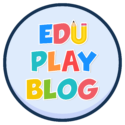
What exactly is play?
Let’s go to the source that replaced running to the bookshelf to find the book labeled with a shiny gold letter “P”. According to Wikipedia, play is described as, “a range of intrinsically motivated activities done for recreational pleasure and enjoyment. Play is commonly associated with children and juvenile-level activities, but play occurs at any life stage, and among other high-functioning animals as well, most notably mammals and birds.” So if play is something that we are all meant to do, for life, then why don’t we play more in schools?
How do researchers define play-based pedagogy and play-based learning?
There are numerous ways researchers define Play-Based Pedagogy (PBP) and Play-Based Learning (PBL). To clarify, play-based pedagogy (PBP) refers to the theoretical approach to using play as a valuable form of instruction. The “Pedagogy of Play” research team aims to, “support schools that value learning through play.” On the other hand, Play-Based Learning is the application of play-based pedagogy. For example, an activity that allows children to interact with the academic content and the world around them, would be considered a form of play-based learning.
What does play-based learning look like in the classroom?
The article that helped me understand PBL on a whole new level was written by Winnie O’Leary. In her post titled, “Play-Based Learning: What It Is and Why It Should Be a Part of Every Classroom” I was able to gather that PBL shows up in many different ways. The most common aspect of PBL that I use in my 5th grade classroom is games. O’Leary shares that educators must recognize that, “we know that using student’s passions to engage them in learning is critical and kids love games. Done right, gaming and gamification of games can engage both intrinsic (pleasure and fulfillment) and extrinsic (recognition that rewards) motivation.” Check the “Lab” page to download a game to play in your classroom.

